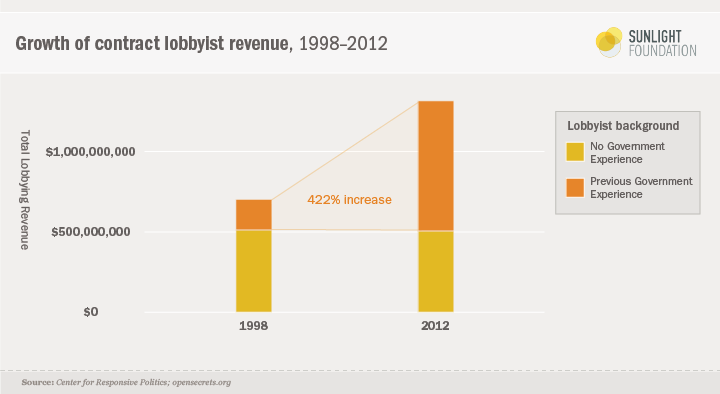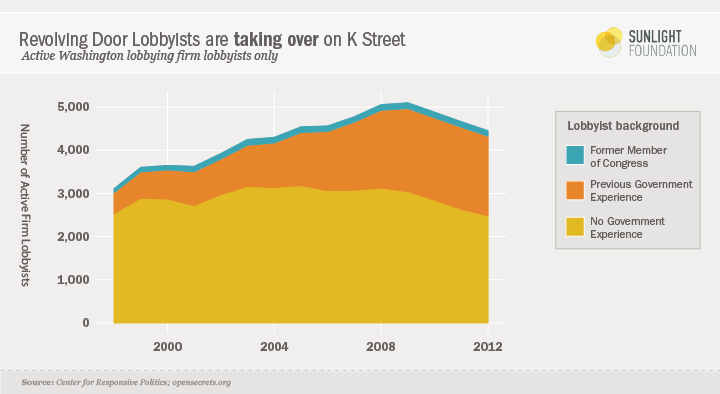How revolving door lobbyists are taking over K Street
Between 1998 and 2012, total lobbying revenue associated with active contract lobbyists almost doubled in real dollars, from $703 million to $1.32 billion. This is consistent with the general increase in lobbying over this time.
But all of that new revenue came in the form of revenues associated with revolving door lobbyists. The total revenue associated with lobbyists without government experience actually declined slightly. We estimate that 85.6 percent of this growth comes from the nearly four-fold increase in the number of active contract lobbyists who are revolvers over this period, while the rest is accounted for by increase in revenue that tends to be associated with revolvers.

The population of “active” contract lobbyists has increased to meet the increasing demand for lobbying over the last decade and a half, growing from 3,109 in 1998 to a high of 5,103 in 2009, declining to 4,455 in 2012. (Again, by “active” we mean lobbyists whose name appears on more than one lobbying report where the spending reported is non-zero in a given year.)
But, if we look below at Figure 2, we see that the increased population of active contract lobbyists is almost entirely an increase in lobbyists with reported prior government experience. The total population of lobbyists who do not report prior government experience anywhere on their lobbying disclosure firms has remained roughly constant, from 2,537 in 1998 to 2,481 in 2012, with a peak of 3,181 in 2005.
But the number of active contract lobbyists with reported prior government experience has nearly quadrupled from 482 in 1998 to 1,846 in 2012, with a peak of 1,926 in 2009. And the number of active lobbyists who served in Congress has increased from 90 in 1998 to 128 in 2012, peaking in 2009 at 135.

Taken together, this means that the share of active contract lobbyists with reported government experience has increased from 17.8 percent to 44.0 percent.

